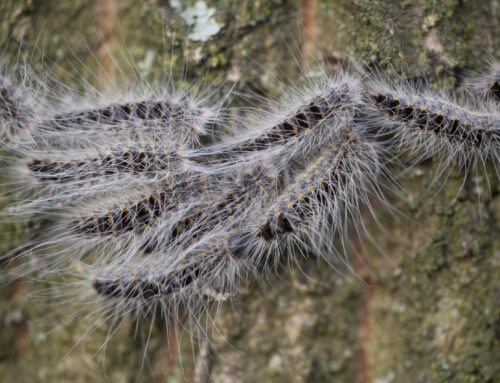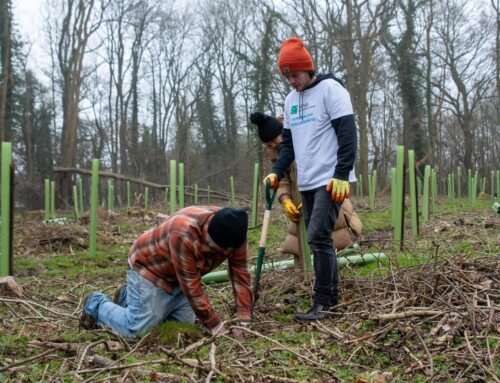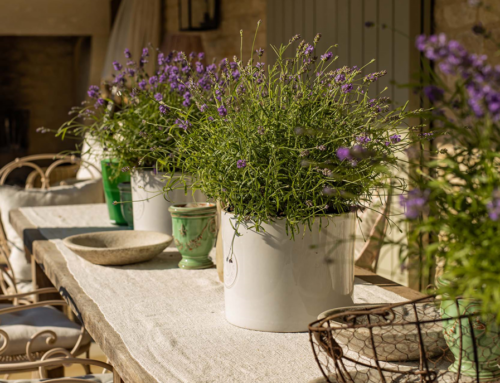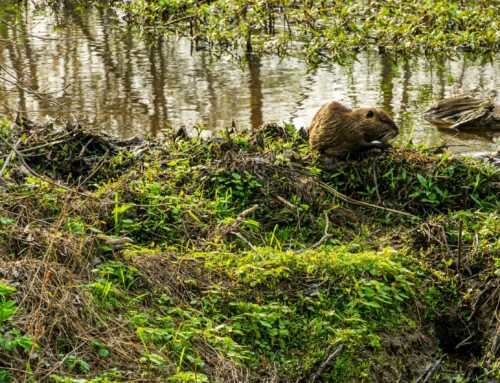Foresters on Tour – 2022 Research Trip to Dresden
How forestry research and practices are developing and adapting in the face of future climatic pressures
Article prepared by Harry Poole, Graduate Woodland Manager
With the list of challenges and threats to effective woodland management growing seemingly larger every year, driven by anthropogenic climate change, it is becoming apparent that we need to continue to adapt our management practices to ensure our woodland systems are more resilient moving forward. Nicholson’s Lockhart Garratt cast its eye across the sea to Dresden, Germany, to witness how forestry research and practices are developing and adapting in the face of these future climatic pressures.
We had the privilege of meeting with Dr Pietzarka of the Technische Universitat Dresden (TUD), a botanical researcher and curator of the Forstbotanischer Garten Tharandt, widely recognised as the oldest forestry school in the world. Dr Pietzarka was able to offer us a wealth of knowledge on forest system resilience and we appreciate the time he took to show us around this beautiful site. Below are the summarised points that we took away from our time at the arboretum:

- It was noted by Dr Pietzarka that the true threat to forests is the changing severity and regularity of climate extremes, rather than increasing averages.
- Species type is not as important when it comes to veteran trees as one would think; rather, it is the form and features of said tree that has more value ecologically. Although a veteran Oak is preferred over a veteran conifer, the conifers have their ecological benefits too which should not be overlooked. It was noted here then that there still needs to be a focus on planting alternative conifer species in the future, which has not been the case in the UK of late, due to the grant system heavily favouring broadleaved species. By keeping these more tolerable conifers in our planting mixes, we can aim to develop a more ecologically and structurally diverse and resilient woodland system.
- There is scope to be more adventurous in our species mixes when planting and restocking. However, wherever possible, native species should take preference over non-natives. By using non-native specimen trees in parks and gardens as a guideline, we may be able to assess and, in some ways, predict the growth characteristics and potential issues of certain species in a planting scenario.
- Whilst being cautious around non-natives, particularly those that are being affected by pests/diseases in their home range, there are several non-natives that could be potential interesting considerations for the future. These included:
White Oak (Quercus alba), Shumard Oak (Quercus shumardii), Willow Oak (Quercus phellos), Shagbark Hickory (Carya ovata), Big-Bud Hickory (Carya tomentosa), Silver Fir (Abies alba), Coastal Redwood (Sequoia sempervirens), Manchurian Ash (Fraxinus mandshurica), Ponderosa Pine (Pinus ponderosa) and Tulip Tree (Liriodendrum tulipifera).
On our second day, we were led by the German Forestry Commission on a site tour of one of their harvesting sites in Tharandt Forest, where we were given more of a look into their silvicultural practices. We send thanks to Dr. Ergang of the TUD and Dr. Wagner of the German Forestry Commission for their time and insight. Below are the main points that we took away from our site tour:
- The overarching management system in place in Germany is termed “Plenter Forests”, whereby uneven-aged plantations with a multi-layered stand structure is the primary aim, known to us as Continuous Cover Forestry. The stands we witnessed adopted this “advanced planting” method, which is undertaken to improve form, whilst improving the biodiversity, age structure and resilience of the woodland. This is an interesting concept for UK forest management, particularly in the face of tackling Ash dieback and restocking with resilient and diverse species mixes.
- To grow quality Oak timber, for example, Saxon foresters were directly sowing at a density of 7,000 stems/ha under a nursery of pioneer species (Aspen/Birch). This allowed for maximum high quality product growth, for a reduced cost. To then add diversity into the Oaks, shade tolerant tree species (Hornbeam in this case) would be introduced 10-15 years after initial planting. In theory, adding these later growing understorey species avoids undesirable interspecific competition and epicormic growth on the Oaks, favouring a stronger, more wind resistant woodland system with greater ecological integrity.
- The Saxon foresters largely seem to be favouring a clump planting approach, with various 0.2ha areas in a woodland with up to 4-6 species over the entire compartment. By increasing the stand diversity, you may reduce the likelihood of diseases/ windthrow creating gaps in the woodland canopy.

We took a lot away from our time in Dresden, namely what UK forestry may achieve moving forward, if we can address the number of challenges currently facing us. Being more adventurous in our species mixes, favouring tolerant conifer species, successfully controlling pests and lobbying towards a more comprehensive grant system will allow us to diversify our planting methods and woodland structures in the face of climate driven threats. We want to express our immense gratitude again to Dr Pietzarka, Dr. Ergang and Dr. Wagner for their time, expertise and passion and we hope that the knowledge we gained in Dresden will help to drive further positive change in UK forestry management.






